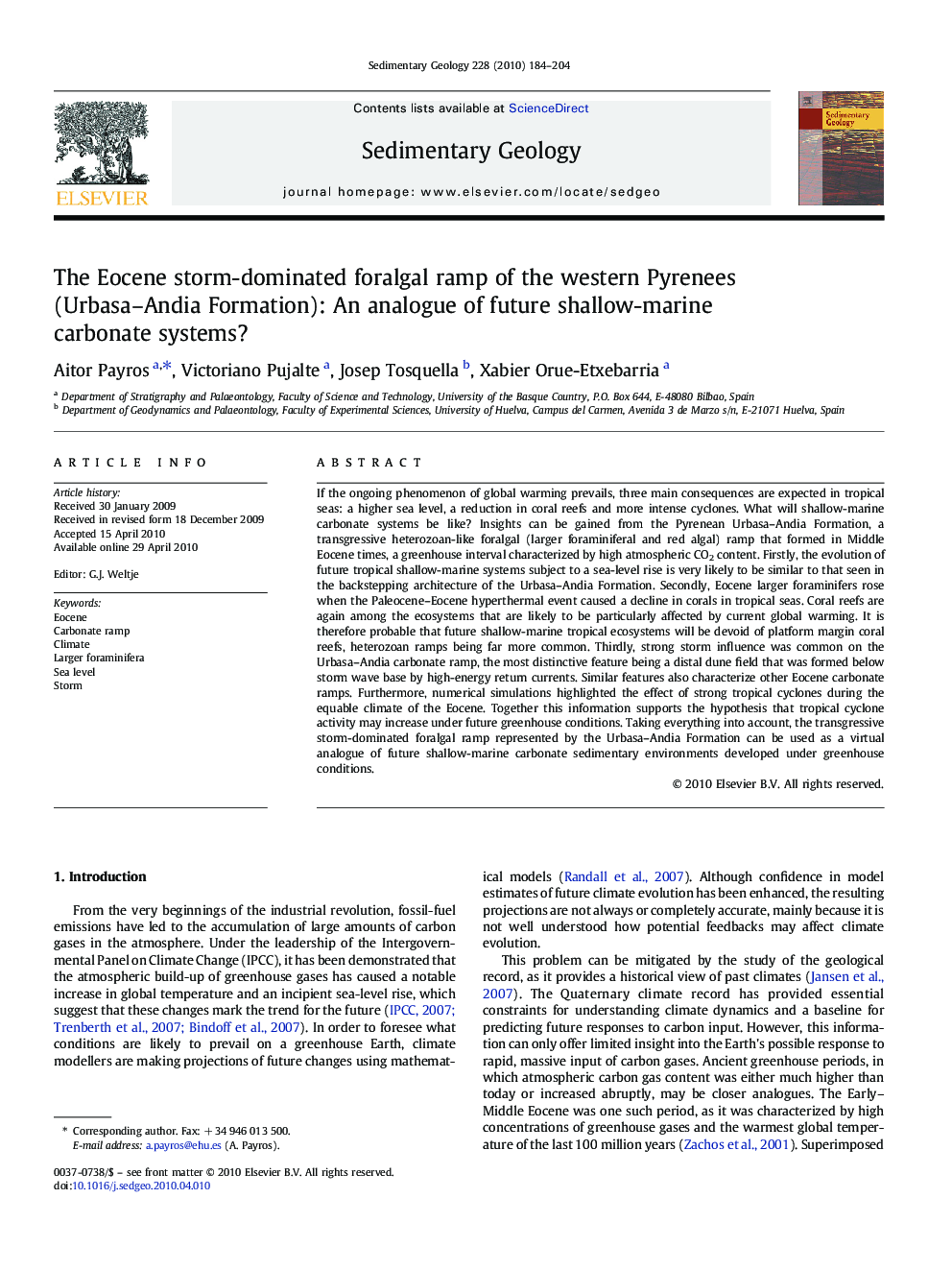| Article ID | Journal | Published Year | Pages | File Type |
|---|---|---|---|---|
| 4690205 | Sedimentary Geology | 2010 | 21 Pages |
If the ongoing phenomenon of global warming prevails, three main consequences are expected in tropical seas: a higher sea level, a reduction in coral reefs and more intense cyclones. What will shallow-marine carbonate systems be like? Insights can be gained from the Pyrenean Urbasa–Andia Formation, a transgressive heterozoan-like foralgal (larger foraminiferal and red algal) ramp that formed in Middle Eocene times, a greenhouse interval characterized by high atmospheric CO2 content. Firstly, the evolution of future tropical shallow-marine systems subject to a sea-level rise is very likely to be similar to that seen in the backstepping architecture of the Urbasa–Andia Formation. Secondly, Eocene larger foraminifers rose when the Paleocene–Eocene hyperthermal event caused a decline in corals in tropical seas. Coral reefs are again among the ecosystems that are likely to be particularly affected by current global warming. It is therefore probable that future shallow-marine tropical ecosystems will be devoid of platform margin coral reefs, heterozoan ramps being far more common. Thirdly, strong storm influence was common on the Urbasa–Andia carbonate ramp, the most distinctive feature being a distal dune field that was formed below storm wave base by high-energy return currents. Similar features also characterize other Eocene carbonate ramps. Furthermore, numerical simulations highlighted the effect of strong tropical cyclones during the equable climate of the Eocene. Together this information supports the hypothesis that tropical cyclone activity may increase under future greenhouse conditions. Taking everything into account, the transgressive storm-dominated foralgal ramp represented by the Urbasa–Andia Formation can be used as a virtual analogue of future shallow-marine carbonate sedimentary environments developed under greenhouse conditions.
